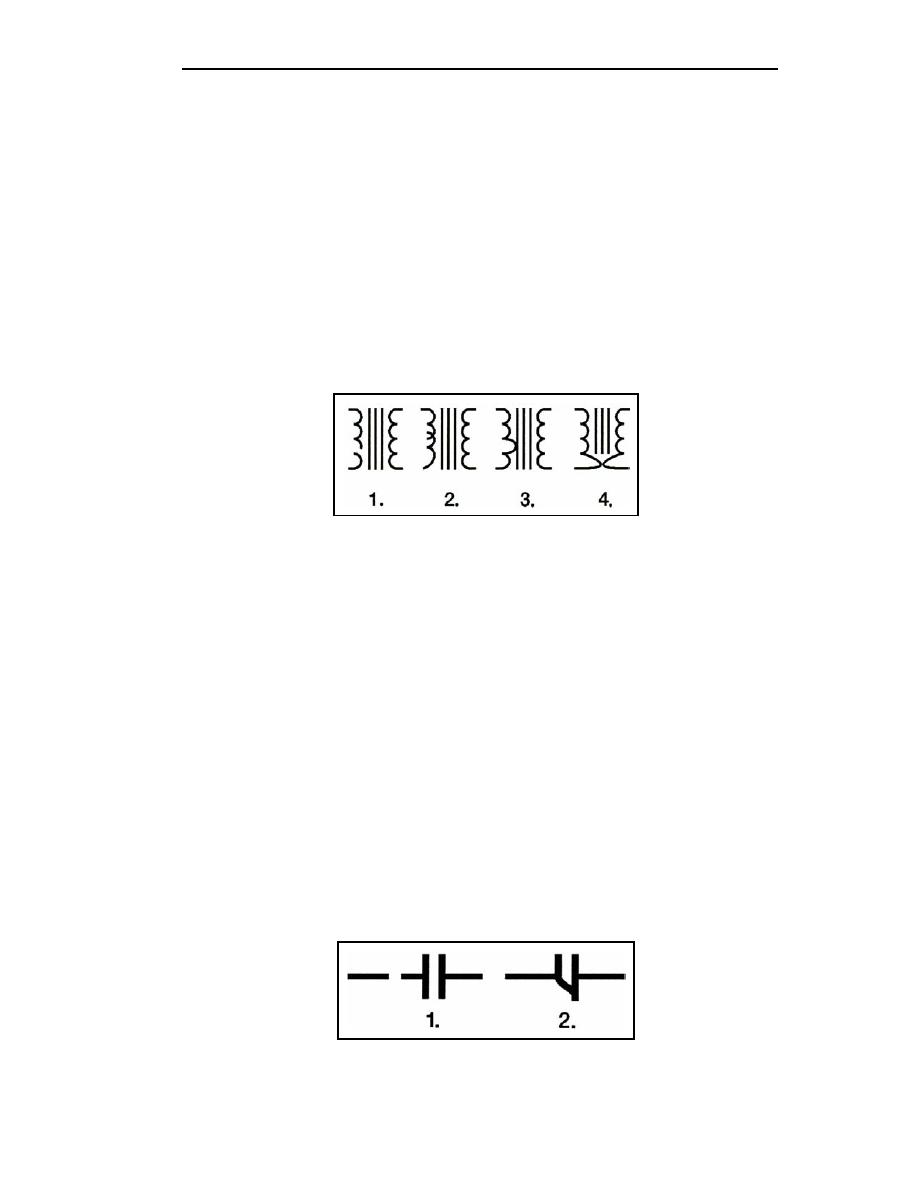
TC 9-62
COMPONENT PROBLEMS
4-141. Many troubles can occur with the many different electronic circuit components.
The following describes some of the troubles that can occur.
Transformer and Choke Troubles
4-142. The transformer and the choke are similar in construction. The following (also see
Figure 4-52) are the four basic troubles that can develop:
A winding can open (number 1).
Two or more turns of one winding can short together (number 2).
A winding can short to the casing that is usually grounded (number 3).
Two windings (primary and secondary) can short together (number 4). This
trouble is possible only in transformers.
Figure 4-52. Basic Troubles for Transformer and Choke
When you have decided which one of the four is causing the trouble, you have definite
steps to take. If you determined that there is an open winding, or windings shorted together
or to ground, an ohmmeter continuity check will locate the trouble. If the turns of a
winding are shorted together, you may not be able to detect a difference in winding
resistance. Therefore, you need to connect a good transformer in the place of the old one
and see if the troubles are eliminated. However, keep in mind that transformers are difficult
to replace. Make absolutely sure that the trouble is not elsewhere in the circuit before you
change the transformer. Sometimes the shorts will only appear when the operating voltages
are applied to the transformer. In this case you might find the trouble with a megger (an
instrument that applies a high voltage as it reads resistance).
Capacitor Troubles
4-143. The following (also see Figure 4-53) are the two things that can happen to a
capacitor:
It may open up (number 1). This removes the capacitor completely from the
circuit.
It may develop an internal short circuit (number 2). This means that it begins
to pass current as though it were a resistor or a direct short.
Figure 4-53. Capacitor Troubles
4-46
TC 9-62
23 June 2005


 Previous Page
Previous Page
